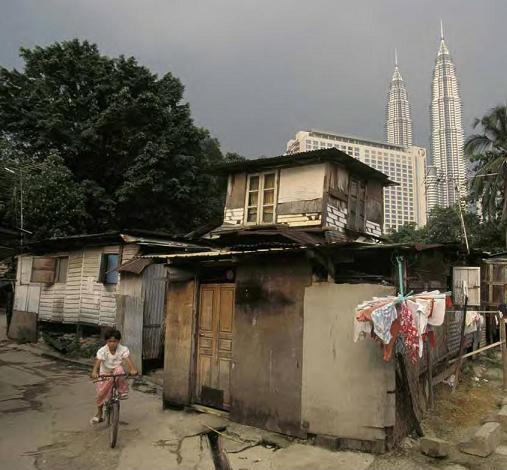

Addressing Inequality Key to Progress on Global Anti Poverty Targets

New York, 20 September 2010— A new report published by the Institute of Development Studies (IDS) and the MDG Achievement Fund on the Millennium Development Goals argues that while significant gains have been made towards achieving the MDGs, the measurements used to calculate countries’ performance are disguising evidence of considerable uneven achievement.
The report, “Can the MDGs provide a pathway to Social Justice: The Challenge of Intersecting Inequalities” found evidence from South/Southeast Asia, Sub-Saharan Africa and Latin America that across the board, people are being systematically left out or left behind from progress often on the mere basis of their race, ethnicity, religion, gender and often location.
The report reminds the international community that the MDGs have their origins in the Millennium Declaration signed in 2000 by 189 world leaders and which laid out an agenda for social justice that includes the fundamental values of freedom, equality, tolerance and solidarity. The failure to tackle the root causes of poverty and social exclusion in efforts to achieve the MDGs betrays the promise of social justice contained in the Millennium Declaration.
The report’s author, Naila Kabeer said “World leaders need to embed the goal’s delivery system within a much more democratic and inclusive process. We need to move away from the idea that the goals are a technical fix and go back to the idea that they are about bringing about processes of change in peoples’ well-being and their ability to control their lives.”
“As we press on to 2015, reaching the poorest and most excluded people has become more important than average rates of progress, particularly if we want the MDGs to be sustainable and address the root causes of instability and insecurity” said Sophie de Caen, Director of MDG Achievement Fund.
The report also found that while the interconnected nature of inequalities makes them difficult to resolve, change is possible through a combination of strong government policies that respond to the needs of the people and an active and organized civil society.
In the predominantly indigenous state of Chiapas, Mexico for example, maternal mortality rates fell from almost 90 per 100,000 live births in 2008 to 60 in 2009 when the state government started to work directly with indigenous midwives and expand culturally sensitive maternal health services to remote communities.
In Malaysia the adoption of quotas, targets and affirmative action to benefit the economically disadvantaged Bumiputera community has contributed to the significant decline in their level of disadvantage vis-a-vis the privileged Chinese minority. While inequality still persists, it has reduced from an inequality index (Gini) of 49 in 1984 to 38 in 2004.
In Asia, a region seen as being on track to meet the MDGs, economic growth has not been matched by equal access to opportunities for the most vulnerable. In Nepal, for example the overall decline in poverty between 1995 and 2003 was 46 percent for the upper caste Brahman/Chhetri groups while remaining at ten percent for Janajatis, and six percent for Muslims. In Vietnam, 45 percent of ethnic minorities have not completed any level of education as compared to 22 percent for the dominant Kinh/Chinese.
In Latin America, extreme poverty is much higher among indigenous and Afro-descendant populations compared with the white/Latino population, while the region’s poor earn only three percent of the total regional income. Indigenous communities represent more than 25 percent of the population in Bolivia, Ecuador, Guatemala and Peru and Afro-descendants amount to over 25 percent in Brazil, Nicaragua and Panama.
In Africa, poverty levels and access to services and opportunities still have strong ethnic and geographical dimensions. In Nigeria, only 8.4 percent of mothers in the predominantly Muslim northwest delivered in a health facility compared with 73.9 percent in the predominantly Christian southeast.
The report also found women and girls living a far more disadvantaged reality. For example, a poor indigenous woman aged 17-22 in Guatemala has 1.2 years of education compared to the national average which is almost 6 years.
As world leaders meet this week for the High Level Plenary Meeting on MDGs in New York the report sends a clear message that in order to sustain MDG progress and address the root causes of instability and insecurity, equity will need to feature prominently in development efforts.